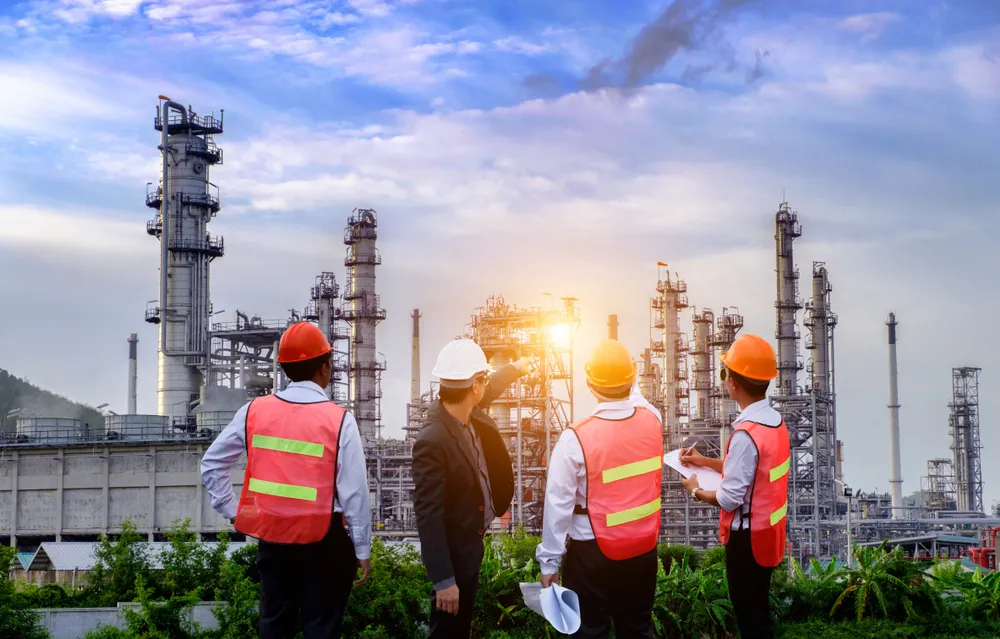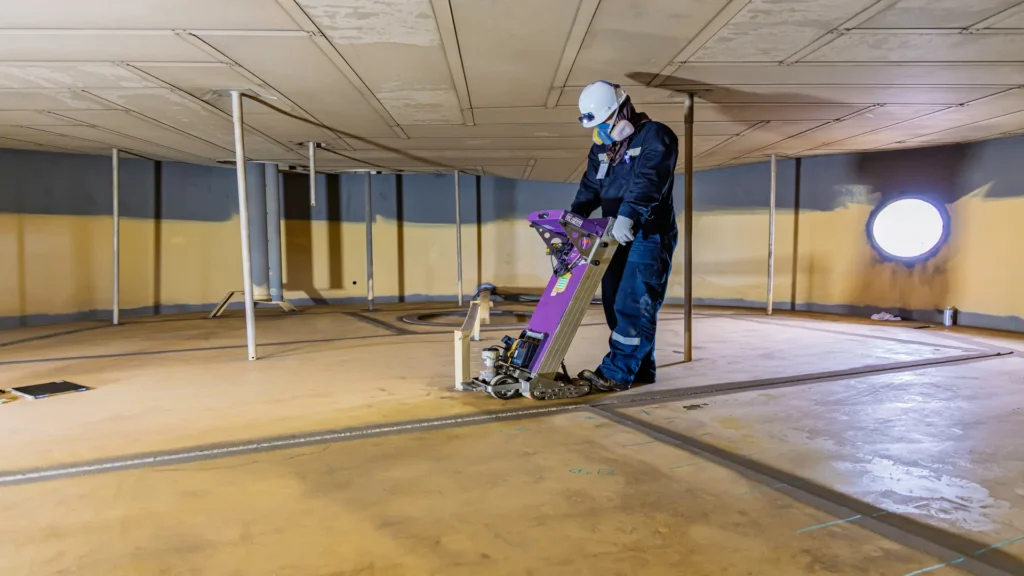Table of Contents
- Contextualization: The Role of API Inspections in the U.S.
- What Are API Inspections?
- Types of API Inspection: 510, 570 and 653
- The Evolution of API 653: Technology and expert vision
- Operational and safety benefits of API inspections
- What Is an API Certified Inspector?
- Practical cases and field application
- Conclusions
- Referencias
- Frequently Asked Questions (FAQs) about API inspections
API inspections are essential for equipment inspectors to ensure safety and efficiency in the oil and gas industry, which requires robust practices for asset management and facility maintenance. A comprehensive inspection API based on these American Petroleum Institute (API) standards is a regulatory obligation.
It represents a proactive strategy to ensure the mechanical integrity of critical equipment, prevent catastrophic failures, and guarantee regulatory compliance. Our goal is to provide a clear roadmap for risk management and protocol optimization, covering key codes such as API 510, 570, and 653.
Contextualization: The Role of API Inspections in the U.S.
The history of API regulations dates back to the founding of the American Petroleum Institute in 1919. From its beginnings, the API focused on establishing standards for safety, efficiency, and reliability. Over time, these standards evolved to address specific challenges such as the inspection of piping, pressure vessels, and storage tanks.
Today, the relevance of certified API inspections in the USA is greater than ever. In a context of technological advancements and environmental awareness, these inspections are essential for evaluating and ensuring the integrity of critical equipment.
The API inspection process is divided into three key stages: planning, execution, and analysis.
| Stage | Key Description |
|---|---|
| Planning | Definition of scope, review of historical documentation, and resource scheduling. |
| Execution | Visual inspection, non-destructive testing (NDT), and detailed recording of findings. |
| Analysis of Results | Condition assessment, prioritization of corrective actions, and preparation of final report. |
comprehensive inspection API standards involves deep and continuous interaction among various experts. Interdisciplinary work is essential to address the complexity of industrial facilities. Below are the main actors:
- Mechanical engineers: Provide expertise on the structural integrity of pressure vessels and mechanical equipment.
- Process engineers: Understand process flows and identify critical areas in piping and associated systems.
- Corrosion inspectors: Specialized in identifying and evaluating corrosion, especially relevant in storage tanks.
- Non-Destructive Testing (NDT) technicians: Perform specific tests to assess material integrity without damaging equipment.
- Health and safety professionals: Ensure that inspection activities are conducted safely and in compliance with safety regulations.

Collaboration between these professionals ensures a comprehensive assessment of the facilities, addressing mechanical, chemical, and safety aspects. comprehensive inspection API regulations is therefore a team effort where synergy between disciplines guarantees reliable and effective results.
What Are API Inspections?
API inspections are technical evaluations established by the American Petroleum Institute that define the requirements for inspecting, evaluating, and determining the condition of critical equipment. They are applied in process plants, refineries, petrochemical facilities, terminals, and transportation systems.
They include:
- Internal and external inspection methods
- Non-Destructive Testing (NDT) applications
- Recommended frequencies
- Evaluation of thickness, corrosion, cracking, and machining
- Acceptance and repair criteria
These standards are mandatory to comply with integrity audits and ensure operational continuity.
Types of API Inspection: 510, 570 and 653
Below is a practical description of the main standards required in the USA and Latin America.
API 510: Pressure Vessel Inspection
Applies to:
- Industrial boilers
- Reactors
- Vessels subjected to internal/external pressure
- Process drums
Evaluates:
- Internal and external corrosion
- Fatigue cracking
- Thickness loss
- Structural integrity
- Heat-affected zones (HAZ)
Operational benefits:
- Reduction of catastrophic failures
- Extended service life
- Personnel safety
- Regulatory compliance with OSHA/EPA audits
API 570: Piping and Process Systems Inspection
Intended for metallic piping systems in service.
Evaluates:
- Internal/external corrosion
- Active leaks
- Flow-induced vibration
- Accelerated thickness loss
- Integrity of supports and joints
Risks prevented:
- Hydrocarbon leaks
- Personnel exposure to hazardous substances
- Environmental damage
- Economic losses due to unplanned shutdowns
API 653: Storage Tank Inspection
Applies to atmospheric and low-pressure tanks.
Inspection focused on:
- Tank floor and bottom
- Corrosion on roof and shell
- Structural stability
- Tightness
- Settlement analysis
Key frequencies:
- Internal inspection: typically every 10 years
- External: every 5 years

The Evolution of API 653: Technology and expert vision
Storage tank inspection under API 653 is undergoing rapid technological evolution. Experts in the field, such as Earl J. Crochet and John Cornell, highlight that the future of the sector focuses on optimizing data collection and safety.
This trend includes the standardization of advanced tools such as:
- Drones and 3D Laser Scanning: For shell inspection and settlement assessment without the need for scaffolding.
- Robotics and Automated UT: For tank floor inspection, improving accuracy in detecting pitting and corrosion, and reducing the need for human entry into confined spaces.
Specialists emphasize that although technology is key, the interpretation of data by an API 653 Certified Inspector remains the most critical factor in ensuring the mechanical integrity of the asset.
Exclusive Video: Expert Vision and the Future of API 653
To explore the future of tank inspection—including the use of drones, robotics, and the challenges facing the new generation of inspectors—watch the exclusive Inspenet TV interview with industry experts such as John Cornell and Earl J. Crochet at the NISTM Conference.

Operational and safety benefits of API inspections
Operational safety is an undeniable priority in the oil and gas industry, and comprehensive inspection API standards play a crucial role in improving and strengthening this fundamental aspect. Early risk identification directly translates into the following technical and strategic advantages:
| Standard | Equipment | Reduced Risks | Frequency | Key Method |
|---|---|---|---|---|
| API 510 | Pressure vessels | Explosions, ruptures | 5–10 years | UT, RT, VT |
| API 570 | Piping | Leaks, accelerated corrosion | RBI-based | UT, EC, AE |
| API 653 | Tanks | Spills, collapses | 5–10 years | UT, MFL, VT |
Strategic advantages:
- Prevention of critical failures
- Maintenance optimization (less corrective work)
- More efficient repair cycles
- Compliance with API and regulatory audits
- Enhanced operational reliability
NDT Methods used in API inspections
Non-Destructive Testing (NDT) is a cornerstone of API inspections, allowing evaluation of asset condition without damaging it.
Main methods:
- Ultrasonic Testing (UT)
- Eddy Current Testing (ET)
- Magnetic Particle Testing (MT)
- Radiographic Testing (RT)
- Acoustic Emission (AE)
- Certified Visual Inspection (VT)
Each API inspection requires a specific set of tests.
What Is an API Certified Inspector?
The API Certified Inspector is a professional accredited under the American Petroleum Institute’s Individual Certification Program (ICP).
Key roles:
- Apply API 510, 570, or 653 criteria
- Interpret UT measurements, corrosion profiles, and defects
- Issue technical recommendations
- Authorize repairs under code
Having certified personnel increases reliability, technical consistency, regulatory acceptance, and reduces errors during inspections.
Comparison Table: API 510 vs API 570 vs API 653
| Characteristic | API 510 | API 570 | API 653 |
|---|---|---|---|
| Equipment | Pressure vessels | Piping | Tanks |
| Primary risk | Explosion | Leak | Spill |
| Focus | Structural integrity | Corrosion and losses | Floor / structure |
| Application | Process plant | Transport and process | Storage |
| NDT Methods | UT, RT, MT | UT, ET, AE | UT, MFL |
Practical cases and field application
- Example 1, API 510: A reactor showed accelerated thickness loss in the area adjacent to the weld (HAZ). Through NDT methods (such as Ultrasonic Testing, UT), the API 510 inspection identified a combined corrosion-erosion mechanism before failure. This condition was corrected, enabling safe and efficient operational continuity of the asset.
- Example 2, API 570: A high-velocity process line presented flow-induced vibration. Through Visual Testing (VT), the API 570 inspector identified damaged supports, and Liquid Penetrant Testing (PT) was performed on elbow welds. The intervention corrected the support system and ruled out fatigue cracking, ensuring mechanical integrity and preventing catastrophic rupture.
- Example 3, API 653: During the scheduled internal inspection, the bottom of an atmospheric tank was evaluated with Magnetic Flux Leakage (MFL) and automated Ultrasonic Testing (UT). The analysis detected severe corrosion (pitting) near the minimum required thickness on the base plate. The intervention enabled preventive repair of the tank bottom according to API 653, mitigating the imminent risk of a leak or major environmental spill and ensuring storage integrity.
Conclusions
Implementing comprehensive inspection API practices enables organizations to ensure the mechanical integrity of critical assets while meeting international standards that enhance operational safety and minimize long-term risks.
A robust comprehensive inspection API strategy not only strengthens equipment reliability and uptime but also supports sustainability by optimizing costs, preventing failures, and protecting business continuity.
Referencias
- American Petroleum Institute. (2014). API 510: Pressure Vessel Inspection Code – In-service Inspection, Rating, Repair, and Alteration (10th ed.). American Petroleum Institute.
- American Petroleum Institute. (2021). API 570: Piping Inspection Code – Inspection, Repair, Alteration, and Rerating of In-service Piping Systems (3rd ed.). American Petroleum Institute.
- American Petroleum Institute. (2020). API 653: Tank Inspection, Repair, Alteration, and Reconstruction (5th ed.). American Petroleum Institute.
Download the Unified Basic API Inspections Checklist (510, 570, 653) to start optimizing your maintenance protocols today.
Frequently Asked Questions (FAQs) about API inspections
What is the main objective of API 510, 570, and 653 Inspections?
The main objective is to ensure mechanical integrity and operational safety of critical equipment. These inspections aim to prevent catastrophic failures, reduce risks, extend asset life, and ensure regulatory compliance in the oil and gas industry.
Who is qualified to perform API Inspections?
Inspections must be performed by an API Certified Inspector, a professional accredited under the Individual Certification Program (ICP) of the American Petroleum Institute. This inspector is qualified to apply code-specific criteria (510, 570, 653) and interpret NDT test results.
What is the main difference between API 510, API 570, and API 653?
The main difference lies in the type of asset they inspect: API 510: Pressure vessels (reactors, boilers, process drums). API 570: Piping and in-service process systems. API 653: Atmospheric and low-pressure storage tanks.
How often must equipment be inspected under API standards?
Frequencies vary by code: API 510 (vessels): External and internal inspections are typically performed every 5–10 years, depending on remaining life and risk (RBI). API 570 (piping): Frequencies are based on Risk-Based Inspection (RBI) and thickness loss identified in CMLs (Corrosion Monitoring Locations). API 653 (tanks): External inspection is typically every 5 years, while internal inspection is usually every 10 years.
What are NDT Methods and why are they crucial in API Inspections?
Non-Destructive Testing (NDT) methods allow evaluation of asset condition and integrity without damaging the equipment. They are crucial because they provide precise data on thickness, corrosion, cracking, and internal defects. Key methods include Ultrasonic Testing (UT), Magnetic Particle Testing (MT), and Radiography (RT).

